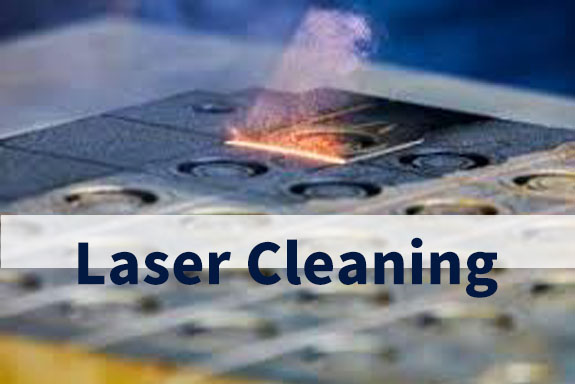Rust is a common problem that affects various metal surfaces, causing deterioration and reducing the lifespan of equipment and machinery. Traditional rust removal methods, such as abrasive grinding or chemical treatments, can be time-consuming, inefficient, and harmful to the environment. Fortunately, laser rust removal has emerged as a cutting-edge solution that offers significant advantages in terms of efficiency, precision, and environmental friendliness.
Laser rust removal uses high-powered lasers to target and eliminate rust from metal surfaces without causing damage to the underlying material. This innovative method has been widely adopted across industries like manufacturing, automotive, and marine, where rust is a persistent issue. In this article, we will explore how rust laser technology works, its benefits, and the cost of laser rust removal, providing a comprehensive overview of this advanced cleaning technique.
How Does Laser Rust Removal Work?
The process of laser rust removal involves directing a concentrated laser beam onto the rusted area of a metal surface. The high energy emitted by the laser rapidly heats the rust, causing it to break apart and vaporize. As the laser works its way over the rusted surface, the debris is removed by a stream of compressed air or vacuum, leaving behind a clean, rust-free surface.
The precision of the laser allows for selective cleaning, meaning only the rusted areas are treated, and the unaffected areas remain intact. This makes laser rust removal an ideal solution for delicate or intricate metal components, where traditional methods could cause damage or wear.
Advantages of Laser Rust Removal
- High Precision and Efficiency: One of the primary benefits of using a rust cleaner laser is its high precision. The laser can target and clean specific areas of a metal surface without affecting the surrounding material. This precision ensures that the rust removal process is highly efficient, minimizing waste and ensuring the treated areas are thoroughly cleaned.
- Minimal Surface Damage: Unlike abrasive methods, which can scratch or damage the metal surface, laser rust removal does not physically touch the metal. This makes it an ideal solution for sensitive or delicate components, such as thin metal sheets or components with intricate designs.
- Environmentally Friendly: Laser rust removal is an environmentally friendly option because it eliminates the need for harsh chemicals or abrasive materials. The process generates minimal waste and does not produce harmful by-products, making it safer for both workers and the environment.
- Reduced Downtime: Laser rust removal is a fast and efficient process that can be performed on-site, reducing downtime and the need for expensive and time-consuming disassembly. This is particularly advantageous in industries like automotive or manufacturing, where equipment downtime can result in significant financial losses.
- Cost-Effective Over Time: While the initial investment in laser rust removal equipment can be higher than traditional rust removal methods, the long-term benefits are substantial. The precision of laser cleaning leads to less material waste and reduced labor costs, making it a cost-effective solution over time.
Cost of Laser Rust Removal
The cost of laser rust removal can vary depending on several factors, including the type and size of the equipment used, the complexity of the rust removal job, and the location where the service is being performed. Generally, the cost can be broken down into the following components:
- Initial Investment: Purchasing a rust cleaner laser can be expensive, with prices for industrial-grade laser rust removal machines ranging from a few thousand to tens of thousands of dollars, depending on the power, size, and features of the equipment.
- Operational Costs: The operational costs for laser rust removal are relatively low compared to traditional methods. The primary ongoing costs include electricity to power the laser and maintenance of the equipment. Since laser rust removal is a fast and efficient process, the overall cost per cleaning job is often lower than traditional methods.
- Service Costs: If you’re outsourcing rust removal, service providers typically charge based on the size of the area to be cleaned, the level of rust, and the complexity of the project. For smaller jobs, the cost can range from a few hundred to a couple of thousand dollars, while larger or more intricate projects may cost more.
- Long-Term Savings: Over time, the use of laser rust removal can lead to significant savings due to reduced labor costs, fewer chemical waste disposal requirements, and less equipment wear. Additionally, the high precision of laser cleaning ensures that the metal surface is not damaged, potentially extending the lifespan of the equipment or components.
Conclusion
Laser rust removal technology is a powerful, efficient, and environmentally friendly solution for cleaning rust from metal surfaces. Its high precision, minimal surface damage, and reduced environmental impact make it an attractive alternative to traditional rust removal methods. While the initial investment may be higher, the long-term benefits, including reduced labor and maintenance costs, make it a cost-effective solution for industries that deal with rust regularly.
As the demand for efficient and environmentally friendly solutions grows, laser rust removal is expected to become even more widespread. Whether you are looking to clean rust from industrial machinery, automotive parts, or other metal surfaces, laser rust removal is an advanced technology that can help you achieve optimal results with minimal downtime and cost.
由用户投稿整理稿件发布,不代表本站观点及观点,进行交流学习之用,如涉及版权等问题,请随时联系我们(yangmei@bjjcz.com),我们将在第一时间给予处理。







